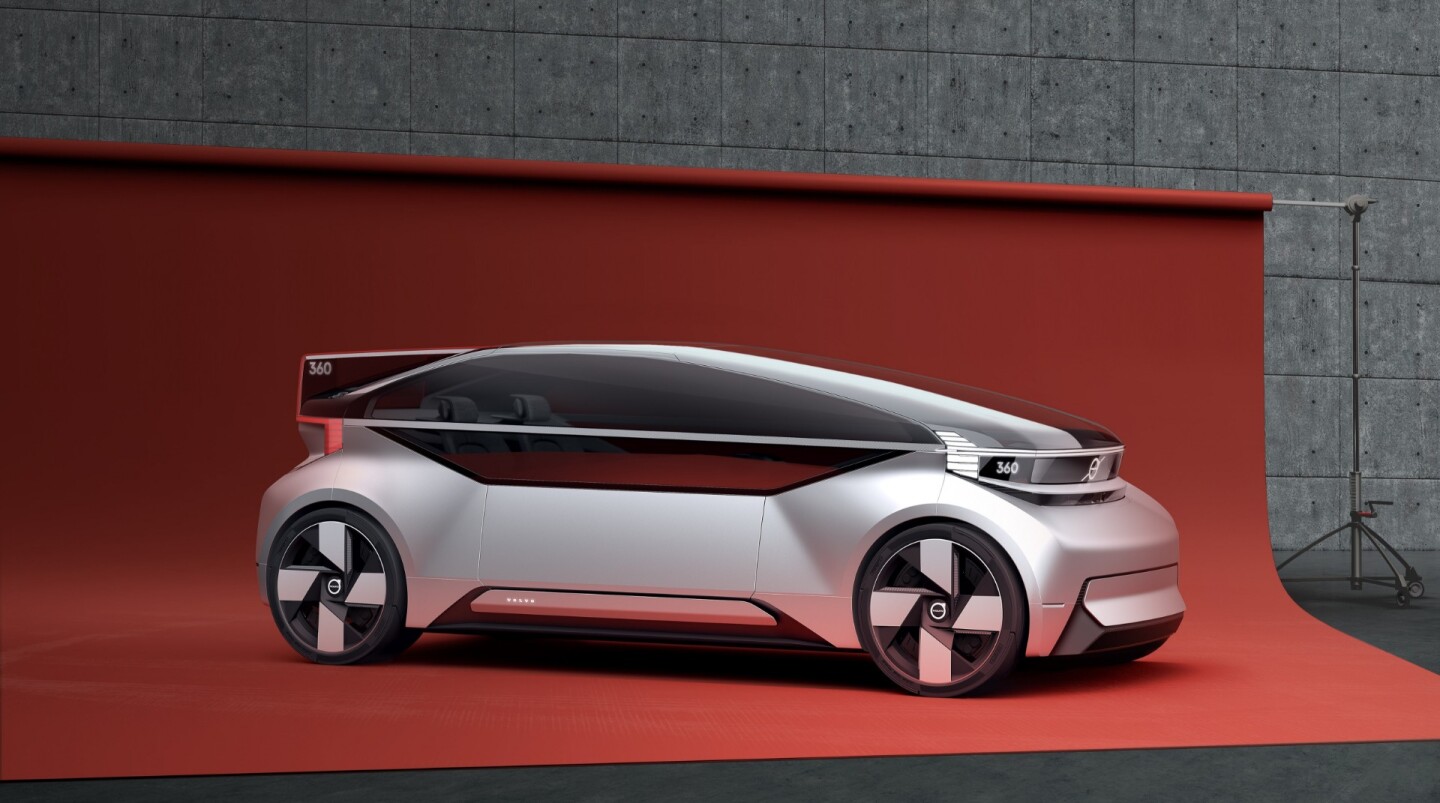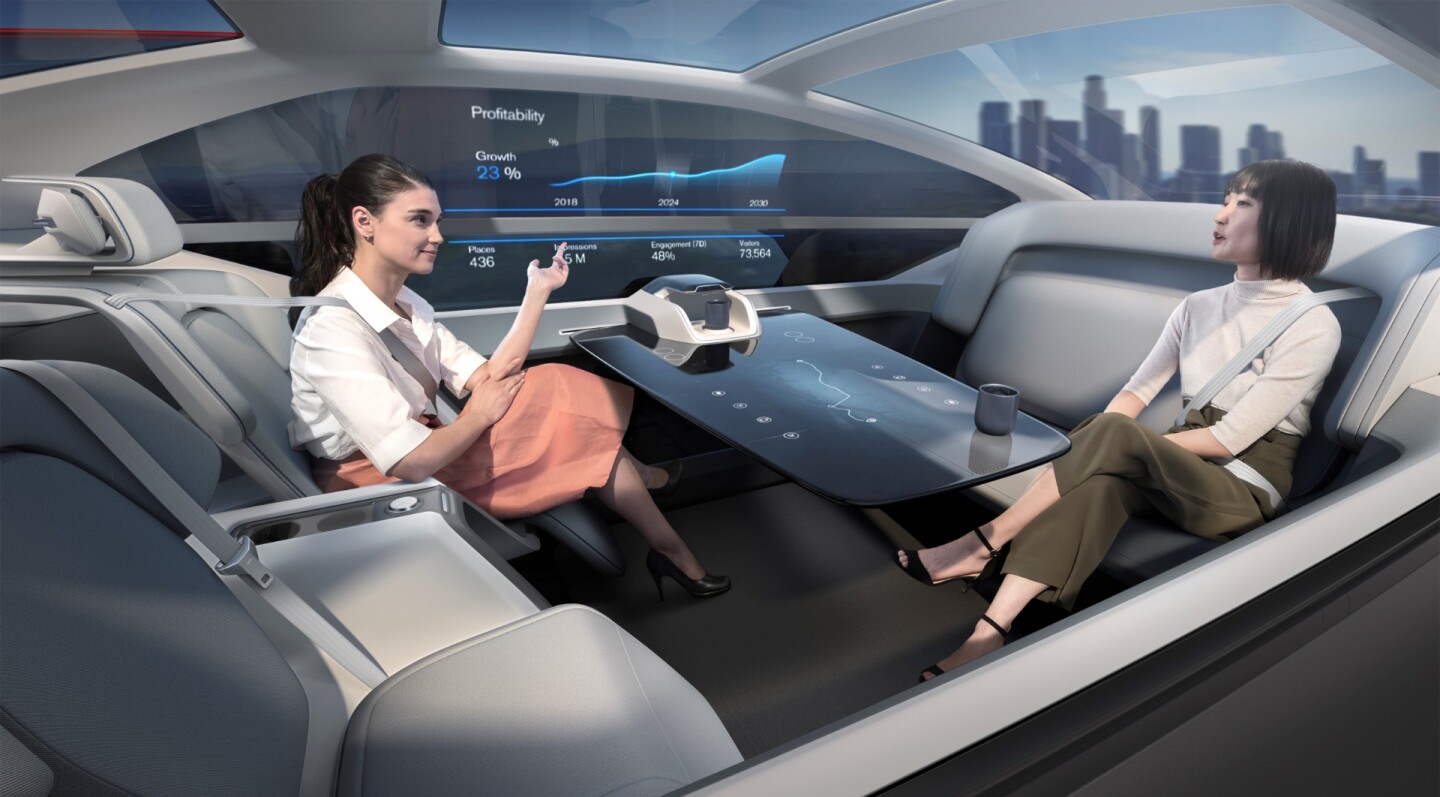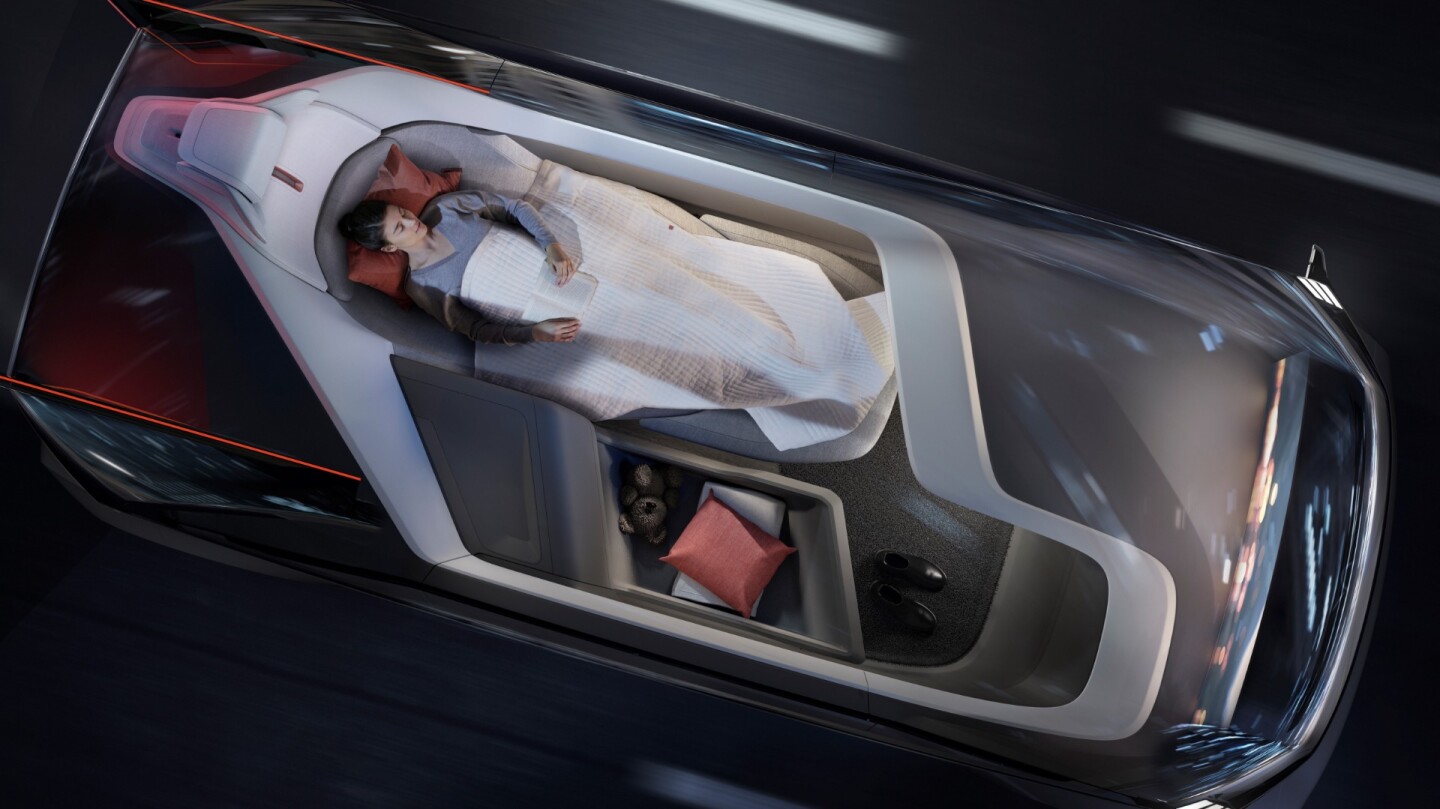Volvo introduced the 360c concept on Wednesday, opening up a new exploration of the autonomous driving future. More than just a vehicle, Volvo is exploring a new travel paradigm, in which fully autonomous vehicles replace short-distance flights, providing a quicker, more relaxing means of jumping from Point A to B. Volvo's concept helps passengers pass the time with sleep, work, entertainment and lounge configurations. Forget arriving hours in advance and fighting long lines to board cramped airplanes, the 360c may just be the ticket to a brighter future for city-to-city travel.
"Autonomous vehicle concepts have a tendency to become a technology showcase instead of a vision of how people use it," explains Robin Page, Volvo Cars' senior vice president of design. "But Volvo is a human-centric brand. We focus on the daily lives of our customers and how we can make them better."

Toward that end, the 360c presents a vision that rethinks how ground transportation might be used within an autonomous infrastructure. The car could serve as a safe, comfortable first class cabin, providing a hassle-free way of making quick commutes often left to aircraft. Think Los Angeles to San Diego or New York to Washington, D.C.
Volvo defines the targeted routes as roughly 186 miles (300 km) from point to point and says that such routes actually become more time-consuming by air than by car once you factor in traveling to and from the airport, going through security and boarding procedures, deplaning, etc.

As Page makes clear, the 360c's focus is end-use and not technology, so Volvo doesn't break down specs for the car, outside of identifying it as electric and fully autonomous with no hardware at all for human driving. The roomy, pod-like car opens up with a large curbside gullwing door and offers several configuration possibilities inside, including a multi-passenger meeting/entertainment space and a single-person recliner/sleeper layout.
"The sleeping cabin allows you to enjoy premium comfort and peaceful travel through the night and wake up refreshed at your destination," says Mårten Levenstam, senior vice president of corporate strategy at Volvo Cars. "It could enable us to compete with the world's leading aircraft makers."

Volvo recognizes that the day fully autonomous vehicles replace all vehicles on the road, let alone airplanes, remains a long ways off. In the interim, it's focusing on how a 360c-style autonomous vehicle could communicate within a mixed driving environment of autonomous and human-driven vehicles.
In addition to vehicle-to-X communications, the 360c uses a mix of sounds, visuals and movements to share its intentions with human drivers and other road users. Volvo hopes to see a similar system implemented universally across the auto industry.

Volvo concludes that the 360c is a mere starter for a conversation about the doors that autonomous driving might open up in the future. The company intends to advance that conversation as technology and infrastructure continue to evolve.
We're not sure that autonomous vehicles will ever go on to replace short-haul flights, or if alternatives like hyperloops, flying cars and city-hopping, self-piloted aircraft will develop more quickly. Volvo's idea is an interesting one to think about in the present, however. Would you choose a self-driving car over the contemporary reality of a short-haul flight? Over potential future alternatives like hyperloops and drone taxis?
Source: Volvo Cars

























